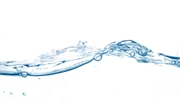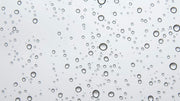How to Make Coffee
Updated for 2021. If you know a few basic flavor concepts, it’s easy to make better coffee. It doesn’t matter what your brew method is. Whether you're making drip, espresso, french press, pour over, or you’ve got an automatic bean-to-cup machine, these basic concepts will help you fine-tune flavor and make better coffee.
Hey Coffee Lovers, Marc here from Whole Latte Love. Today, a look at variables you can control when making coffee and how to manipulate each to affect flavor. Now, depending on your brew method and equipment, you may have less control over some variables than others. When that’s the case, you can often use one of the other variables you do have control of to have a similar effect on flavor.

Flow Control: The New Era In Coffee
The topics I’ll cover today are:

Coffee Beans: Roast Level and Growing Altitude
Grinding your own beans fresh right before brewing is the single most important thing you can do to make better coffee. That wonderful smell of fresh ground coffee? Those are aromatics evaporating into the air. The longer the wait time between grinding and brewing, the more flavors are escaping that never make it into your cup.
Now, you’ve got a lot of choices when it comes to beans, so I’ll focus on a few key things which can help you make selections.
First is the roast level. As the roast gets darker you tend to taste the beanless and the roast more. In fact, lesser quality beans are sometimes roasted very dark to cover up defects in flavor. That’s not always the case and if you like dark roasts the majority or just fine.

Light Roast, Medium Roast, and Dark Roast Coffee Comparison
On the other hand, lighter roasts tend to feature the flavor of the bean and are more common for specialty coffees like single-origin beans, where all the beans come from the same growing area. Incidentally, lighter roasts retain more caffeine.
Growing altitude affects flavor. If you like coffee that’s simple, soft, and sweet, look towards lower altitude coffees. As you go higher, flavors get more intense with wine-like traits, including fruit, spice, and floral notes. Coffee grows slower at altitude due mostly to lower temperatures. That slow growth usually means smaller beans with more concentrated flavors and usually higher prices.

Grind Quality and Particle Size
Before we get into grind, dose, brew temps and time we need to define under and over-extraction, as those four variables can affect extraction. With under-extraction, you’re not pulling enough out of the coffee. You’re leaving flavor behind and you end up with thin, weak coffee with sour flavor. With over-extraction, you’re pulling too much out of the coffee and you end up with bitter, heavy cups. So the goal is a balanced extraction and you get there by controlling the variables available with your brew method and equipment.

How Coffee Brewing Temperature Affects Flavor
If you’re grinding fresh you will always have control of grind size. If you’re buying a grinder do yourself a favor, get a burr grinder and stay away from those that use blades. They aren’t really grinders at all, but choppers. They hack coffee into random size particles and you end up over extracting the small particles and under extracting the big ones. You’ll get an unbalanced, maybe mucky coffee with both sour and bitter flavors. Burr grinders are the way to go. They produce consistent particle sizes for even extractions.

What's in a Burr?
Grind size is directly related to brewing time. For espresso with a brewing time around 30 seconds, it’s a very fine grind, somewhere between not quite powdery and granulated sugar. For cold brew with a brewing time running up to twelve hours or more, the grind needs to be extra coarse. So, the shorter the brew water contact time the finer the grind. To adjust for bitter flavors grind a little coarser and to adjust for sour flavors grind a little finer. Now, keep in mind you can use grind size adjustment together with other variables like brew temperature and time if they’re available with your brew method or equipment to make similar flavor corrections.
In espresso brewing, grind size adjustment is critical. Tiny changes in grind size can make a huge difference. If you’d like to learn more about that, check out our blog article below, Dialing in Espresso: How to Make Better Espresso.

Dialing in Espresso: How to Make Better Espresso
Coffee Dose: Amount and Weight
Adjusting the coffee dose, which is the amount or weight of coffee used for brewing adjusts the strength of flavor. If you keep all other variables the same and just use more coffee you’ll get about the same flavor, just a little stronger. Now that’s simplified a bit, especially for a brew method like espresso, where grind size and dose weight have a very close relationship which is amplified by the very short brew time.
Brew Time and Temperature
The recommended temperature range for all coffee brewing methods om Fahrenheit is 195℉ to 205℉ for our friends in the measurement developed world who use Celsius, that’s 90.5℃ to 96℃.
So, how to use that? Well, if you have control of brew temperature, the basic guideline is towards the cooler end of that range for darker roasts and move towards the hotter end for lighter roasts.

For Brew Time and Flavor Adjustment the Specialty Coffee Association of America says that if your coffee is sour, it is under-extracted, meaning you should increase your brew time. If your coffee is bitter, it is over-extracted, and you should decrease your brew time. For Coffee Temperatures, darker roasts should be brewed at 195 degrees Fahrenheit or 90.5 degrees Celsius. Lighter Roasts should be brewed at 205 degrees Fahrenheit, or 96 degrees Celsius.
Now, so you know, temperature is where a lot of bargain-priced coffee brewing equipment falls short. Many cheaper drip brewers and entry-level espresso appliances make brew water out of that range. If you’re serious about drip coffee, check out our collection of drip brewers and look for equipment by Technivorm, Behmor, Bonavita, and Breville with either Specialty Coffee Association testing and certification or temperature control.
For brew time, depending on your brew method, we’re talking about the total brew water contact or immersion time. Here again, it’s generally a story of over or under-extraction. If time is too short it’ll be an under-extraction, too long and you’ll over-extract. For drip coffee, you’re all set with an SCA certified coffee maker. They’re tested for proper brew times. For other methods like press, pour-over, and cold brew you have complete control. Things get a little more complex with espresso where grind size and dose weight determine brew time.
Water Quality
Coffee is mostly water, so for good flavor and to protect your equipment from scale or corrosion it’s important to use water with proper mineral levels. We’ve gotten a lot of questions about using pure distilled or reverse osmosis water. It seems like that would make sense, but those very pure waters lack minerals and you need some minerals for good flavor. Ultra-Pure water is an incredibly good solvent. It over-extracts coffee and can cause corrosion in brewing equipment, which is why distilled and RO water is never stored or transported in metal.

Best Water for Coffee and How to Make the Best Tasting Coffee
On the other hand, hard water with high mineral levels can cause scale to build up in brewing equipment. If you don’t descale, left unchecked it can cause equipment failure. So what do you do? First, know your water quality. If it’s hard you probably already know it. So use a filter that removes chemicals and gives you mineral levels that reduce or eliminate scale build-up. You can click here to check out filters ranging from systems for plumbed in espresso machines to a range of products, including in-tank filters and pitchers with calcium reducing ion-exchange technology.

BWT Water Filters for Espresso Machines
So those are some basic things that you can control to make better coffee and espresso. Remember, it’s all about the variables that contribute to a great-tasting cup of joe so don’t pass up on investing in high-quality equipment, and practice with different variables so that you can find your sweet spot.
 Canada
Canada

